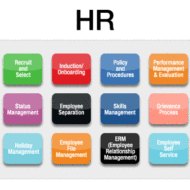Posted by Managementguru in Strategy
on Mar 2nd, 2015 | 0 comments

Advantages of Strategic Management A couple of definitions on STRATEGIC MANAGEMENT Strategic management involves formulation and implementation of the major goals and plans taken by a company’s top management on behalf of owners, based on consideration of resources and an assessment of the internal and external environments in which the organization competes. The methodical analysis of the factors associated with customers and competitors (the external environment) and the organization itself (the internal environment) to provide the basis for maintaining optimum management practices is another well known definition. The objective of strategic management is to achieve better alignment of corporate policies and strategic priorities. Advantages: 1. Discharges Responsibility The process of strategy formulation satisfies the expectation from shareholders, stakeholders and the general public at large, that a strategically managed organization will discharge its duties successfully. 2. Allows an Objective Assessment Strategic management provides a CONTROL that allows the senior management team to take a step back from the day-to-day business and CONTEMPLATE about the future of the organization. 3. Faciliatates to Make Wise Business Decisions Strategy provides the framework within which EXECUTIVES at lower and middle levels can make day-to-day operational decisions that are aligned with the accomplishment of the organization’s goals. 4. Enables Understanding and Improves co-ordination between different departments Allowing participation in the strategic management process enables better understanding of the direction, why that direction was chosen, and the associated benefits. Good strategy formulation and communication process are vital steps in enabling effective and efficient strategy deployment. 5. Simplifies Measurement of Progress Strategy sets the direction and empowers an organization to bring into line its objectives and performance measures. These objectives and performance measures allow meaningful information to be provided to decision-makers regarding the organization’s progress through such tools as scorecards and dashboards. 6. Enhances Strategic Agility (Innovation) When a firm can successfully capitalize upon opportunities resulting from unanticipated and significant change, it is said to be innovative as it has a competitive edge over other firms. 7. Ensures Allocation of Resources: The limited resource is properly allocated to different functional levels so as to create value for all stakeholders. A targeted approach to markets and opportunities obviously strengthens your bottom line. A simple representation will make your understanding better: Enhanced Communication DIALOGUE PARTICIPATION | | Deeper/Improved Understanding OF OTHER’S VIEW OF WHAT THE FIRM IS DOING | | Greater Commitment TO ACHIEVE OBJECTIVES TO IMPLEMENT STRATEGIES TO WORK HARD | | The Result ALL MANAGERS AND EMPLOYEES ON A SINGLE MISSION TO HELP FIRM SUCCEED...

Posted by Managementguru in Business Management, Strategy
on Feb 17th, 2014 | 0 comments

Corporate policy formulation What are Policies? Business activities should be based on some solid principles that serve as guidelines for direction. These principles are nothing but policies which help a business firm in attaining its goal. Policy does not tell a person exactly what to do, but it does point out the direction in which to go. While objectives are a goal or an end to be sought, policies are a general rule of action which helps in attaining a goal. Policy Statements Statements released by corporate firms generally highlight the major policies behind their action. For instance, if a firm says that, its aim is to provide the customers with products that are competitive in terms of quality, price, weight and contents, it tries to sum up the recurring problems in the industry and assures the customers that it will serve the customers in the true spirit of business. What is the meaning of Policy Formulation? Policies are generally formulated by the officials of the top management cadre, as policies reflect the mode of thought and principles underlying the activities of an organization. Policies guide a firm in the following aspects. Thinking Decision making Conduct of business Enterprise operations Problem solving So, it is evident that each policy contains two components, a “principle” and a “rule of action”. Corporate policies are statements of directions, guidance for corporate thinking, corporate behavior and action, and therefore cover a very broad area. Such policy formulations are made in the light of challenges posed from the external environment exposing the strengths and weaknesses of the organization. The Process of Policy Formulation Process of policy formulation – corporate management – Manu Melwin Joy from...




